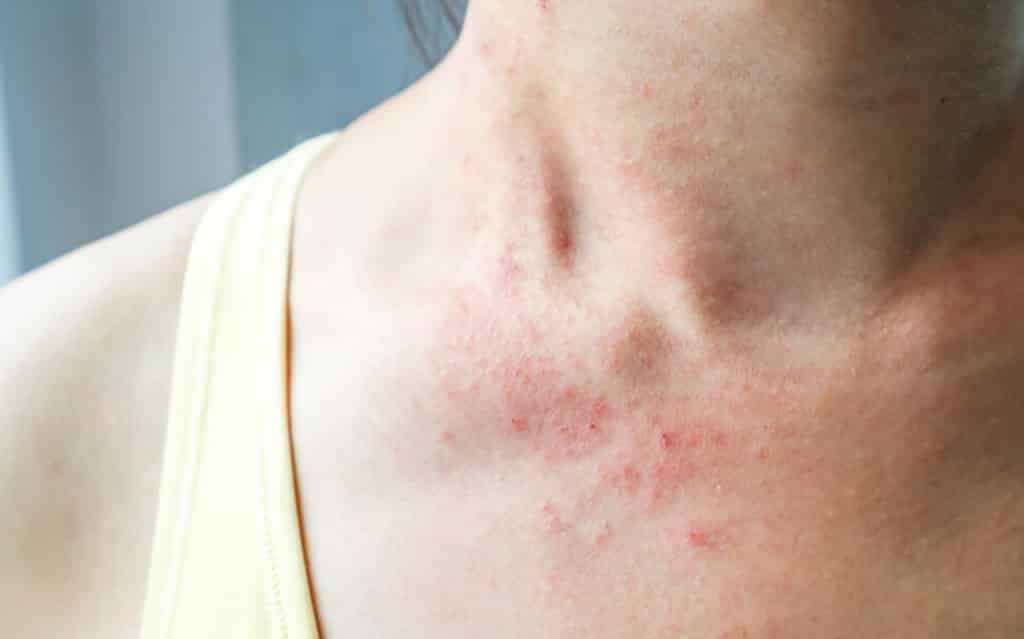It can sometimes be hard for an inexperienced person who is undergoing a new skin treatment to decide whether what is happening to their skin is a reaction (an undesirable effect) or a response (a positive outcome) of the skin treatment. Are you one of those people? Read on and discover how to decide whether you should be concerned about what you see or feel and when you should be pleased that your skin is responding.
Skin Reaction Signs
Every skincare product or treatment relies on numerous ingredients. It is hard to find an ingredient that doesn’t trigger an allergic reaction in every single person who uses that product. What matters therefore is for you to be alert to how your body is responding to those different ingredients either individually or collectively.
The common signs of an allergic skin reaction include redness, heat, swelling, raised bumps and itchiness. It may not be wise for you to quickly conclude that your skin is reacting to the skin treatment you are receiving if you observe one or two of the signs mentioned earlier.
Instead, you should be concerned if a combination of several of those signs is manifesting at the same time.
That notwithstanding, you should also note that each of these symptoms could be an indicator of another problem altogether.
For example, itchiness can develop when your skin barrier is impaired and you suffer from dryness or dehydration, especially during winter when the air is drier. Itchiness may also be a result of a new medication you are taking or other health problems.
What to Do When You Suspect You Have a Skin Reaction from Your Skin Care
- Immediately take a photo. It is important to immediately take a photo so you can share this with your therapist for advice. People often don’t think of this and then try and explain what the rash looked like. This is important in the event that you do have an allergic reaction and we can then request a refund from the supplier for you. This requires us to submit reaction claim form with photos of the reaction.
- Stop the skin treatment. Obviously, you should not continue with a skin treatment that you suspect to be triggering a skin reaction. Continuing the treatment can only result in a deterioration of the allergic reaction, if any.
- Contact your therapist immediately. Let your therapist know what is happening so she can trouble-shoot with you to find out which product or ingredient is most likely the culprit.
What to Do When Your Therapist is Not Available
- Apply a Topical 1% Hydrocortisone Cream. This will calm the sin, reducing the redness, swelling and itching. You can purchase this over the counter from your Pharmacy. You can also use cool compresses to calm the skin.
- Take an Antihistamine if you need. If you are experiencing discomfort, you can take an antihistamine which you can get over the counter from your Pharmacy also.
When You Need to See a Doctor About a Suspected Skin Reaction
Skin reactions vary in intensity from one person to another, and from one episode to another within the same individual. You can deal with some reactions on your own while some rare cases require you to see your skincare therapist and a doctor.
See your doctor when the following situations arise but always advise your therapist first:
- When your entire body develops hives or a rash. It is vital for you to see a doctor when this happens because you could be having a systemic rather than a localised reaction to the skincare treatment. Your doctor will examine you and select the best way to arrest that reaction.
- Difficulty breathing. Any suspected skin reaction that causes respiratory distress requires the immediate intervention of a medical expert. In fact, you should visit an emergency room when you develop breathing difficulties while undergoing a skin treatment.
- A bleeding or oozing rash. Some people may have a rash that bleeds or oozes when their skin is exposed to an allergen. Such a reaction requires the intervention of a medical professional so that other problems, such as infections, don’t develop at the bleeding or oozing site.
- When symptoms last longer than a fortnight. It is also wise for you to see a doctor if the symptoms you experience take longer than a fortnight before subsiding. This visit to your doctor is necessary regardless of whether you consider the symptoms to be minor or severe.
Your Skin is Simply Responding to Treatment
As already noted, there is a chance that your skin has been “empowered”. When you increase the blood supply to the skin redness may occur. It can be a sign of improved skin function and mean that your skin is now performing better as a result of the skin treatment you have been undergoing.
If that is the case, then just continue with the treatment for more desirable results. Otherwise, follow the advice given by skin therapist.
Do you have any further questions about this topic? Get in touch with the experienced team today at Skin Correctives.



 by
by